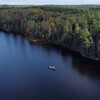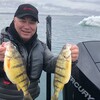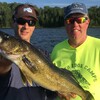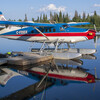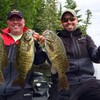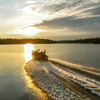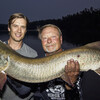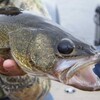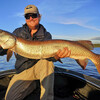
The Eyes Have It
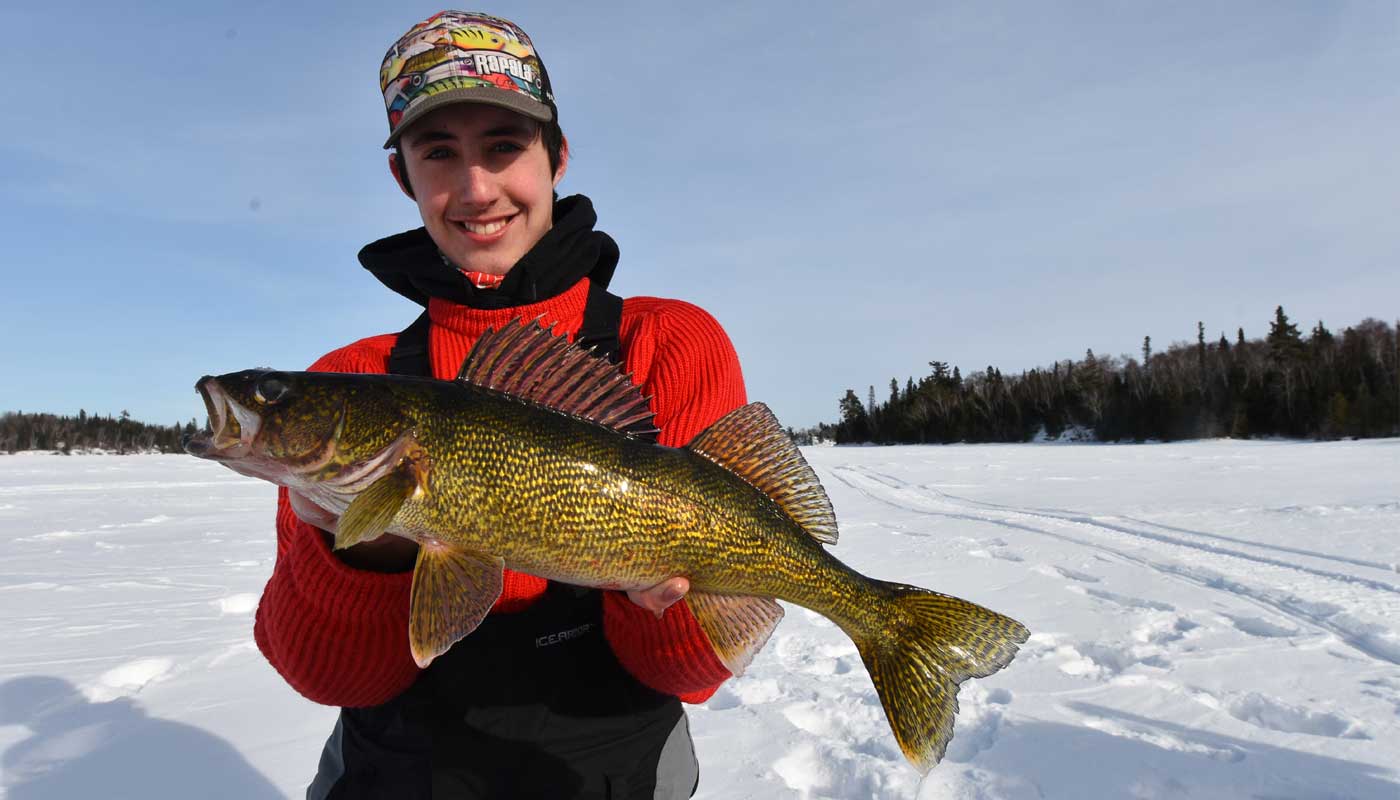
Spend enough time around ice anglers who fish for walleyes and yellow perch in Northern Ontario and you'll soon find yourself immersed in the ever-persistent debate focused on the best presentation to offer the fish—an artificial lure or live bait.
Well, here is a surprise because many days the answer is neither.
Indeed, we've been enjoying a scorching ice bite this winter for big, beautiful, jumbo yellow perch. Most days it has been hard to catch a striped bandit under a foot in length, with most of the tasty oversized fish averaging between 13 and 14 inches.
That is stout.

And the perch bite has been so knock-on-wood consistently good that most days we've not even targeted their bigger, bolder, beautiful walleye cousins. Seems more than enough nice opal eyes have simply shown up on the ends of our lines, as bonus, happen chances.
What we've been using for bait, on the other hand, is something I've relied on since I was a young kid ice fishing for perch on Lake Simcoe's famous Cook's Bay. It is the eye that I have carefully removed from one of the fish that we've already placed on ice.
Carefully pinned to the end of a jig or dangling below a small spoon or jigging minnow, there is absolutely nothing quite like it. It looks, smells, and tastes like what the fish are eating.

A good friend, Dr. Bruce Tufts, a fish physiologist at Queen’s University and superb angler, often talks about "super stimuli"—things that make fish flip head-over-heels and open up their mouths wide when they see it.
At the top of the list is an eye.
Indeed, the next time you're wandering down the aisle of your favourite big box tackle shop, take a look at the various crankbaits, jerkbaits, minnow baits, surface lures, and jigs adorning the walls. See how prominent the eyes are in the most popular selling lures?
It is not a coincidence.
The eyes are often the first thing you see. They make the lures come alive, as though they are staring at you as you size them up. Fish see and sense the same thing, and it drives them mad.
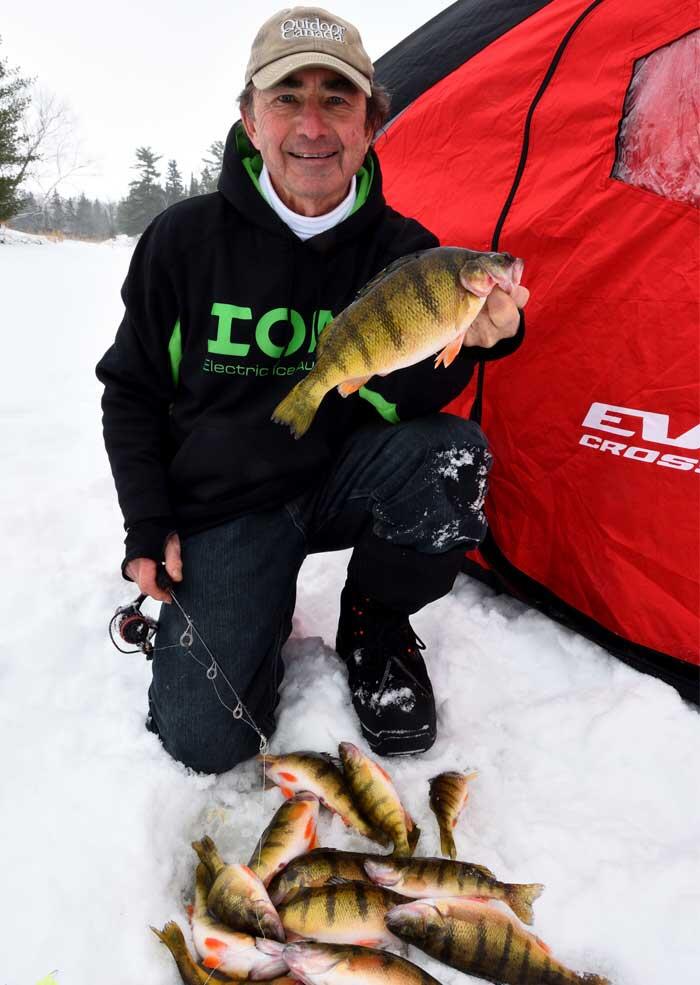
As a matter of fact, in nature, prey species often sport dark eyespots or "false eyes" on their bodies—usually near their dorsal or tail fins—that confuse predator fish and thwart the attack.
Researchers with Australia’s Centre of Excellence for Coral Reef Studies, for example, recently discovered that damselfish not only have the ability to grow larger false eyes on both sides of their bodies near their tails, but they can also shrink the size of their real eyes so as to confuse their predators. Indeed, a predator thinks the damselfish is going to flee in the opposite direction that it actually takes.
Even more amazing, when the scientists donned scuba gear and studied the damselfish on the coral reefs, they found that the ones with enlarged false eyes near their tails were five times more likely to avoid being eaten than the ones with normal-sized eyespots.
How is that for a brilliant evolutionary adaptation?
And you can use it to your advantage to catch more and bigger walleyes and yellow perch this winter.
To be sure, when you attach the eye of a perch you've carefully removed from a dead fish that you previously caught, you're giving the predators the perfect target. Only this bull’s eye is surrounded by sticky, sharp hooks.
About the only thing you have to be careful about is not puncturing the eye if you use a sharp knife to remove it. I like to carefully run the tip of my Leatherman around and behind the eyeball so the whole thing pops out. When you do it correctly, it will look like a large bead, and the tissue at the back of the eye is super tough. So, you can often catch a dozen or more fish on one eyeball.
I should mention, too, that the eye from a walleye works just as well for catching other walleyes. Because it retains the tapetum lucidum, which acts like one of the light-reflecting balls from the bygone disco era, it shines and reflects light, even in the dark, in 28 feet of water, allowing other walleyes to zero in on it.
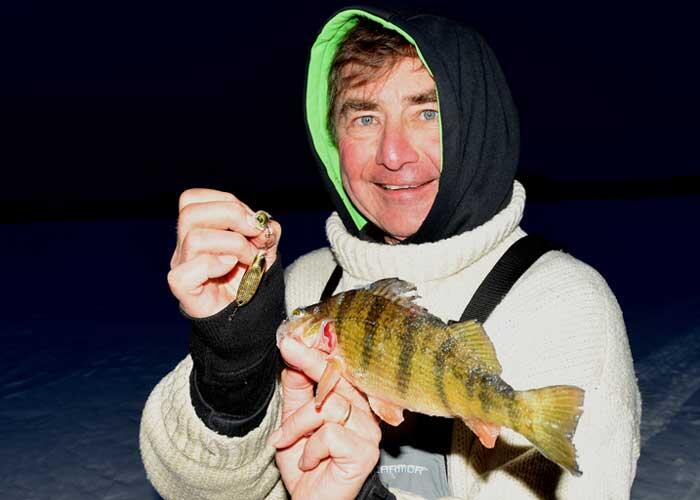
Last, but certainly by no means least, some folks might be wondering if it is legal to use perch and walleye eyes as bait, since they have been obtained from a sport fish and the Ontario Fish and Wildlife Conservation Act prohibits the wasting of fish flesh which is suitable for consumption. The good news is that the eyes are not considered flesh, so it is perfectly fine to use them as bait. Indeed, anglers typically discard the heads of walleye and perch after they clean their catch, so you're actually making fuller use of a valuable natural resource.
And that is good, considering most days, the eyes have it.
Recommended Articles

Why Anglers Are Falling for Golden Lake in Ontario’s Ottawa Valley

Top 5 Baits for Smallmouth and Largemouth Bass

Ideal Christmas Gifts For The Northern Ontario Ice Angler

Fishing Esnagi Lake
Awesome Algonquin

Predicting Lake Thickness

Beaded Lures

Eating Northern Pike
Ontario Brook Trout

’Tis The Season

Hidden Musky Gems

Casting for Coasters
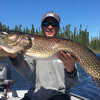
Ontario’s Monster Northern Pike Fishing Adventures
Don’t Be Afraid Of Muskies

The Perfect Shore Lunch

Walleye Sunsets

Fly-in Fishing

Wild Brook Trout

Guardian Eagle Resort

